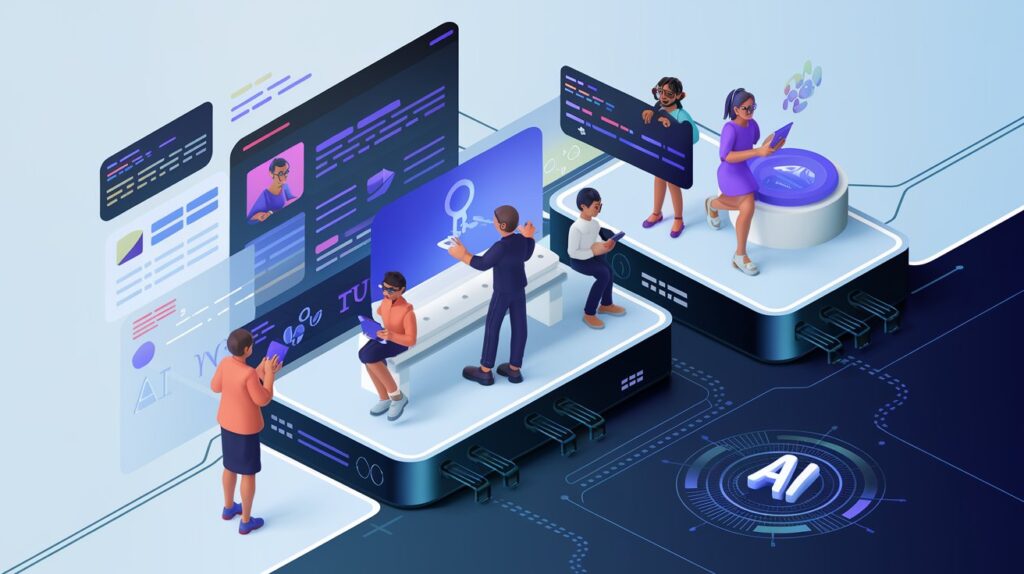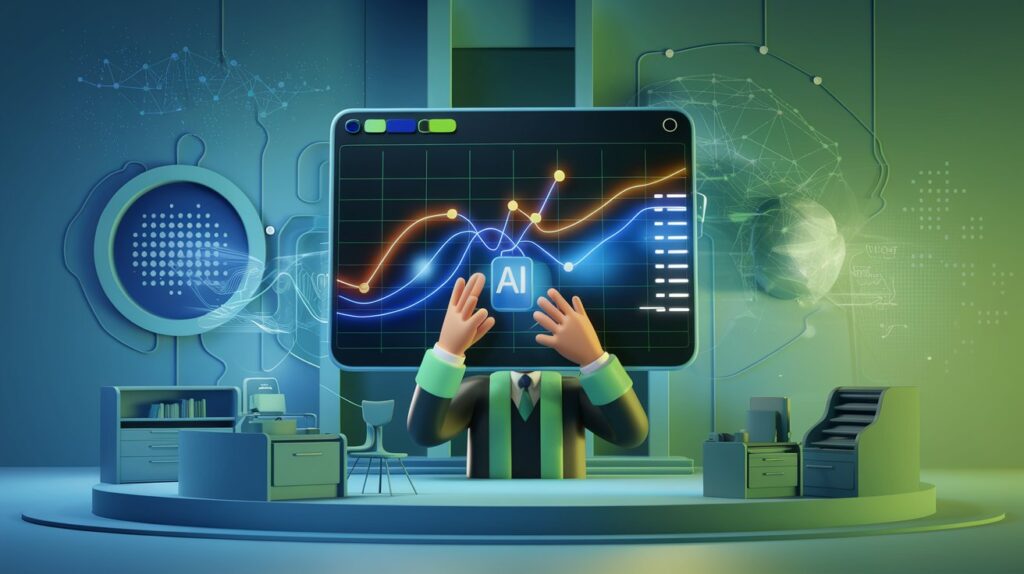Introduction
In 2024, AI image recognition technology is transforming industries, from healthcare to e-commerce. With the ability to analyze, interpret, and categorize images, AI-powered tools are helping businesses streamline operations, enhance security, and improve customer experiences. As demand for these solutions grows, finding the right AI image recognition tool can make a critical difference in the efficiency and accuracy of tasks ranging from facial recognition to medical imaging.
In this guide, we’ll explore the top 10 AI image recognition tools of 2024 and what makes each one stand out, providing you with the insights you need to make an informed decision.
Table of Contents
1. Google Cloud Vision AI

Tool Overview
Google Cloud Vision AI offers a robust set of image recognition features powered by Google’s deep learning models. The tool can detect objects, landmarks, and logos, read text in images, and perform facial recognition with impressive accuracy.
Use Cases
- E-commerce for product identification
- Healthcare for analyzing medical images
- Retail for inventory management and visual search
Strengths
- Integration with Google’s cloud services
- Highly accurate object detection
- Real-time analysis capabilities
Pricing and Availability
Google Cloud Vision AI follows a pay-per-use model, with free usage up to a certain limit. Enterprise pricing varies based on usage.
2. Amazon Rekognition
Tool Overview
Amazon Rekognition is an AI image and video analysis service that excels in facial recognition, object detection, and sentiment analysis. It’s a favorite for applications in security and retail.
Use Cases
- Security and surveillance for face detection
- Retail for customer sentiment analysis
- Media for content moderation
Strengths
- Seamless integration with AWS
- Accurate facial analysis
- Scalable for large datasets
Pricing and Availability
Amazon Rekognition offers a tiered pricing model based on the number of images or videos processed, with a free trial for new users.
3. IBM Watson Visual Recognition
Tool Overview
IBM Watson Visual Recognition provides customizable image recognition models tailored to specific industries. It allows users to train the system for specific needs, enhancing precision for niche applications.
Use Cases
- Manufacturing for defect detection
- Fashion for style identification
- Agriculture for crop monitoring
Strengths
- Customizable models for industry-specific applications
- Simple API for integration
- High accuracy with trained datasets
Pricing and Availability
IBM Watson offers both free-tier and paid services, with subscription options for larger-scale usage.
4. Microsoft Azure Computer Vision
Tool Overview
Azure Computer Vision by Microsoft offers a comprehensive suite of image recognition features, including optical character recognition (OCR), face detection, and object analysis. It is designed to work seamlessly with other Azure cloud services.
Use Cases
- Document processing with OCR
- Retail for product recognition
- Real estate for image tagging
Strengths
- Excellent OCR capabilities
- Easy integration with other Azure services
- High scalability for enterprise solutions
Pricing and Availability
Azure Computer Vision uses a pay-per-use model with an initial free tier. Enterprise pricing is available for high-volume users.
5. Clarifai
Tool Overview
Clarifai is a powerful AI platform specializing in image and video recognition. It provides both pre-trained models and the ability to train custom models to meet specific business needs.
Use Cases
- Media for video analysis
- Healthcare for medical image classification
- Social media for content moderation
Strengths
- Customizable models for various industries
- Fast processing speed
- User-friendly platform
Pricing and Availability
Clarifai offers a free tier, with paid plans available based on API requests and additional features.
6. OpenCV
Tool Overview
OpenCV (Open Source Computer Vision Library) is a widely-used open-source image recognition library. It offers a wide range of functionalities and is a popular choice among developers for building custom image recognition systems.
Use Cases
- Robotics for real-time image processing
- Security for motion detection
- Autonomous vehicles for object detection
Strengths
- Completely free and open-source
- Huge community and extensive resources
- Flexible for customization
Pricing and Availability
As an open-source tool, OpenCV is free for all users, with a large support community for troubleshooting and guidance.
7. Face++
Tool Overview
Face++ is a specialized image recognition tool focusing on facial recognition and human body analysis. Its high accuracy and speed make it ideal for security and retail industries.
Use Cases
- Security for facial authentication
- Retail for personalized marketing
- Social media for face detection and tagging
Strengths
- Highly accurate facial recognition
- Comprehensive face analysis features
- Integration options for mobile apps
Pricing and Availability
Face++ offers a pay-per-use model with different pricing tiers depending on the volume of API calls.
8. Anyline
Tool Overview
Anyline is a mobile-focused AI image recognition tool, known for its superior optical character recognition (OCR) and barcode scanning capabilities. It’s widely used in industries that require real-time data capture.
Use Cases
- Retail for barcode scanning
- Logistics for inventory management
- Law enforcement for document scanning
Strengths
- Mobile-first design
- Fast and accurate OCR
- Easy integration with mobile apps
Pricing and Availability
Anyline offers a variety of pricing plans depending on business needs, including free trials for small projects.
9. Scandit
Tool Overview
Scandit is an AI-powered tool designed for high-performance barcode scanning, text recognition, and image-based workflows, primarily catering to retail and logistics sectors.
Use Cases
- Retail for inventory tracking
- Logistics for package scanning
- Healthcare for patient record scanning
Strengths
- Excellent barcode scanning performance
- Multi-platform compatibility
- Designed for mobile devices
Pricing and Availability
Scandit offers enterprise pricing plans with tailored solutions for different industries.
10. Deep Vision
Tool Overview
Deep Vision focuses on analyzing visual content, identifying objects, brands, and even specific scenes within images. It’s useful for industries like advertising, where understanding visual content is critical.
Use Cases
- Advertising for brand recognition
- Media for content filtering
- E-commerce for product tagging
Strengths
- Superior brand detection
- Scene identification capabilities
- Easy integration with other AI tools
Pricing and Availability
Deep Vision offers customized pricing based on business needs, with trial options for new users.
Comparison Table
| Tool | Key Features | Strengths | Pricing |
|---|---|---|---|
| Google Cloud Vision AI | Object detection, text recognition | High accuracy, real-time analysis | Pay-per-use |
| Amazon Rekognition | Facial recognition, object detection | Seamless AWS integration, scalable | Tiered, free trial |
| IBM Watson Visual | Customizable image models | Industry-specific applications | Subscription |
| Microsoft Azure Vision | OCR, object analysis, face detection | Excellent OCR, scalable | Pay-per-use |
| Clarifai | Image, video analysis, customizable models | Fast processing, user-friendly | Free and paid plans |
| OpenCV | Custom image recognition library | Free, highly customizable | Free |
| Face++ | Facial recognition, body analysis | Accurate, mobile integration | Pay-per-use |
| Anyline | Mobile OCR, barcode scanning | Mobile-first, fast | Various plans |
| Scandit | Barcode scanning, text recognition | Multi-platform, high performance | Enterprise pricing |
| Deep Vision | Brand detection, scene identification | Excellent brand analysis | Customized pricing |
FAQs
What are the most important features to look for in AI image recognition tools?
Key features include accuracy, speed, ease of integration, scalability, and industry-specific customization.
How does image recognition technology work?
AI image recognition analyzes visual inputs through deep learning models, identifying objects, faces, text, and patterns in images.
Can AI image recognition be integrated into mobile apps?
Yes, many tools like Anyline and Scandit offer mobile-friendly solutions with APIs for easy integration into apps.
What industries benefit the most from AI image recognition?
Healthcare, retail, security, and advertising are some of the industries that gain significant benefits from AI image recognition.
Practical Tips
When choosing an AI image recognition tool:
- Evaluate the accuracy and scalability based on your specific needs.
- Look for easy integration options, especially if you plan to use the tool across multiple platforms.
- Start with free trials to test multiple tools before making a final decision.
Conclusion


Whether you’re working in healthcare, retail, or another industry, the right AI image recognition tool can greatly improve your efficiency and accuracy. Each tool in this guide offers unique features and capabilities, from Google Cloud Vision AI’s real-time analysis to Face++’s highly accurate facial recognition. Try out these tools to find the best fit for your needs, or explore more about AI image recognition in our other guides.



Pingback: How to Ask AI to Roleplay with Me: A Comprehensive Guide -